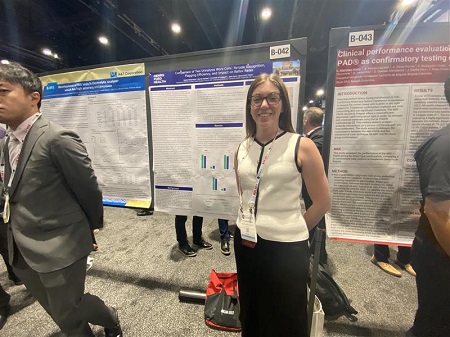Danaher’s diagnostics companies were pleased to be a part of the wonder, excitement and productive conversations at the ADLM 2025 Clinical Lab Expo, as we connected with those in our industry who share our mission to further diagnostic technology and patient care – both today and in the future. Throughout the conference, we focused on accelerating the real-world impact of precision diagnostics through collaboration, integration and innovation, while highlighting key solutions that drive better outcomes for patients.

In an exciting collaboration, Danaher’s diagnostic companies teamed up for the first time to showcase how we are accelerating the real-life impact of precision diagnostics. In the past, Danaher divisions Beckman Coulter Diagnostics, Cepheid and HemoCue, Leica Biosystems and Radiometer have for the most part operated and attended ADLM separately. This year, with our new integrated approach, a unified focus was on full display – bringing together our unique contributions to create a connected diagnostics ecosystem bound by our collective strengths. Because of this, we were able to showcase a full spectrum of innovative technologies advancing global laboratory medicine for a range of diagnostic categories:
- Neurology
- Infectious diseases
- Nephrology and urology
- Cardiology
- Diabetes
- Oncology
- Women’s health
- Anatomical and digital pathology
- Emergency and intensive care
Highlighting strong internal partnership was only part of the equation. We also shared how we are working with external laboratory, academic and healthcare partners to create solutions that allow care providers to diagnose conditions with unprecedented speed and precision through technology and future-proofing strategies.
Our collaborative strategy caught the attention of Kelsy Ketchum with 360Dx, who wrote about how we are building collaborative ecosystems to support innovation and the advancement of patient care. Read the article.

Innovating at the speed of life in the lab and beyond: key solutions for patient care
While the range of information and insights shared in our booth reflected the breadth of Danaher’s diagnostics company technologies, our presentations, appointments, posters and one-on-one discussions addressed specific discoveries and solutions for key disease areas. At a granular level, we were able to showcase technology and share scientific evidence that is expanding what’s possible in clinical diagnostics.

Poster presentation: Henry Ford Health
A standout moment was a poster presentation featuring real-world data, comparing our DxU Iris Workcell with the Sysmex UN Series system. The aim of the study was to evaluate the performance of the two automated systems and the differential recognition of abnormal findings.
Urinalysis plays a vital role in diagnosing urological and nephrological conditions, but traditional urinalysis testing can be labor-intensive for clinical laboratories due to manual examination and results interpretation. Automated testing has helped to alleviate the labor burden of testing, but systems from different companies may not perform the same.
The poster detailed the urinalysis of test specimens at Corewell Health William Beaumont University Hospital in Royal Oak, MI (Sysmex UN Series) and Henry Ford Hospital in Detroit, MI (Beckman Coulter DxU Iris Workcell), finding a very high agreement between individual samples and lower agreement for abnormal samples. Results showed that the Sysmex UN Series system had higher rates of abnormal findings compared to DxU Iris Workcell. Falsely abnormal results required follow-up with added operator time. For details, read comparison of two urinalysis work cells: particle recognition, flagging efficiency, and impact on reflex rates. View the poster.

 English
English





